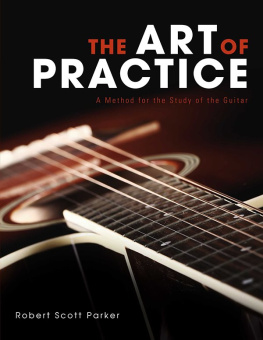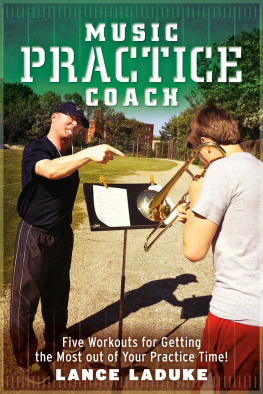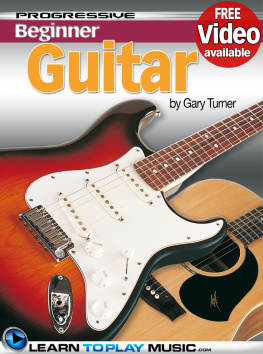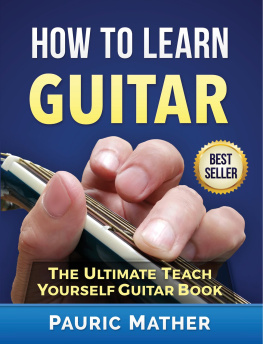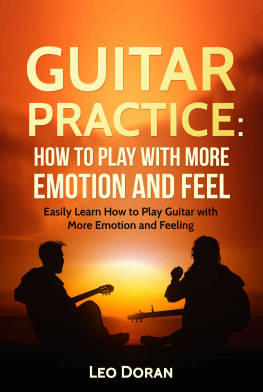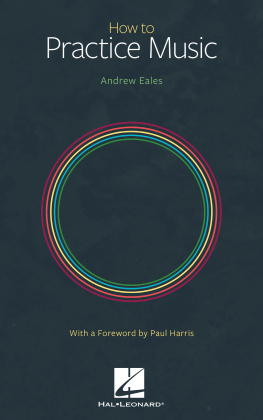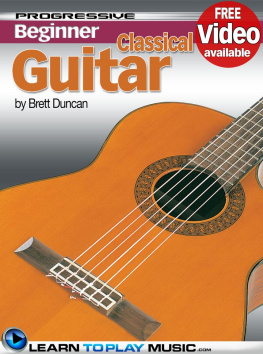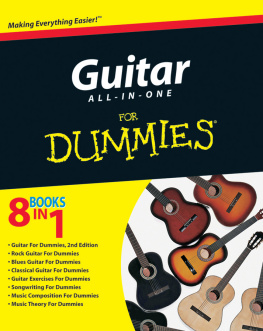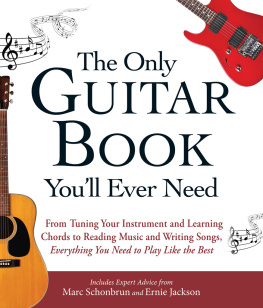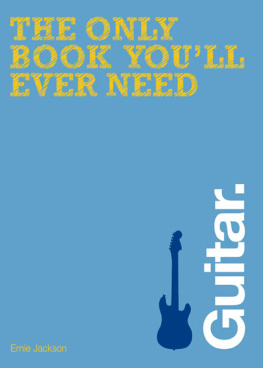Graphics
Diagrams:
- 4 Finger / 4 Fret Ex.
- The Fretboard / E Mixolydian scale
- Chords
- Scales
- Chord / Scale Relationship
Music:
- Rhythmic notation and strumming
- Chord Progressions
Illustrations:
- The Circle of Fifths
- The Order of Chord Forms


The first step in learning to play the guitar is how to hold the instrument. This is not as easy as you might think and a lot more important than you think. There are many stories about how a great player developed his skill; I would like to share a few.
Roy Buchanan was called the best undiscovered player in the world. When he was discovered he astounded players everywhere and became a legend. At one point in his career he lived in L.A. and shared an apartment with James Burton, the player that backed up Elvis, Ricky Nelson, and many other greats. Buchanan was frustrated trying to play as well as Burton. He watched and listened but could not achieve the same level of ability. Then, one day he noticed that Burton was holding his guitar much higher and extending the neck to the left. Buchanan made the adjustments, holding his guitar high and extending it left, and was able to raise his level of ability immediately. You will notice that the best players follow the same example. Holding the guitar in a specific way makes it easier to play, thats all, easier. Segovia, the creator of the genre of classical guitar, would audition students before he ever agreed to accept them as students. Students had to be able to play several important pieces of classical guitar, but before they played Segovia watched the way they held their guitar. If they did not hold it correctly he dismissed them and would not accept them as a student. The point here is there is a way to hold the guitar that makes it much easier to play.
You should hold the guitar as high as possible while feeling comfortable with its placement. The neck of the guitar should be elevated and placed where the left hand can easily reach it by merely lifting the left forearm. This is the easiest way to hold the guitar to achieve playing with less effort.
The best way to hold the guitar in the correct position is use a guitar strap. When using the strap your hands are free to play and the strap balances the guitar keeping it in the correct position. Also, you can play standing or sitting with the guitar being held in exactly the same position.

The easiest way to tune your guitar is to use a mechanical guitar tuner which can be purchased at any music store.
When performing, the noise on the stage and in the venue often make it impossible to clearly hear each string, so tuning with a mechanical guitar tuner is the only way to practically stay in tune. Invest in a good mechanical tuner, but learn to tune by ear. Yes, unless you can tune by ear you will never hear if your instrument is truly in tune. Buy a tuning fork, A440 and tune your fifth string at the fifth fret harmonic to that note, now you are ready to tune the other strings in order, E-A-D-G at the fifth fret and B at the fourth, E at the fifth. This is the best way to tune because you are using fretted notes with open notes; these combinations give you a relatively tuned instrument that sounds in tune up and down the fretboard. Tuning to harmonics, open strings, only tunes open notes and is not that accurate. The mechanical tuner does not compensate for each individual instruments minor differences. I have taught each student to tune by ear and know it is possible for anyone to learn this invaluable skill.

The guitar pick or plectrum is the best way to play the guitar. How can I say that when there are so many ways of playing with only your fingers? Well, you can use your picking hand anyway you choose, but with a pick you can play all styles of guitar and that includes finger picking.
The guitar pick is held between the thumb and first finger with the first finger angled at 45 degrees. Holding the pick this way keeps the wrist relaxed and makes strumming natural and functional. This is simply the best way to hold the pick and play the guitar. Using the pick and fingers is called, Hybrid picking and is used for all styles of playing. It is necessary to learn to strum and finger pick in order to play all the styles of guitar playing.

Using the left hand with the maximum of control and the minimum of effort results in knowing the demands of each finger of the hand.
Learning to arch each finger and bar with each (play adjacent strings with one finger) is fundamental to soloing. The left hand thumb should remain on the neck most of the time for support of the fingers, but wraps around the neck for support of many techniques. Use your thumb in a way that works best for the music your playing. Avoid bending your left wrist; this causes the tendons of your left hand to stretch, creating tension and lack of mobility. The development of muscle memory happens while practicing, that means, all the time. You may acquire knowledge of playing the guitar, but without muscle memory you will not be able to play what you know! The movements of the left hand become automatic.

Developing feel while playing is the result of using the hands and arms in the most natural way.
The hands must be free to move up and down the fret board. As you advance each step requires better technique and control. The music played on the guitar demands strong and flexible hands and using your arms to support the freedom of the hands gives you this ability. Whenever you pick up the guitar use the best technique possible. Every bad habit is magnified by repetition, so learn and repeat the best techniques at every stage of learning.

The first exercise is called, Four Fingers / Four Fret Ex.. This is a deceptively difficult exercise because it requires using the four fingers of the left hand one at a time and placing each one on a different fret.
The fingers reach up to the fret and not in the middle or below the fret. Placement of the fingers behind the frets is necessary to producing notes that are in tune. Begin by placing the first finger on the first fret of the sixth string (the lowest string) then play one finger at a time up the fret board on one string at a time. After playing the sixth string move over to the fifth, fourth, third, second, and first strings. Play up each string and when you reach the first string reverse direction and play the fourth fret with the fourth finger and continue playing down each string until arrive back where you began, first finger, first fret of the sixth string. Begin each practice with this exercise and play it as often as you can, it will improve your playing and give you control of each finger. This exercise will be expanded into a variety of more complex exercises in the next stages of playing.

